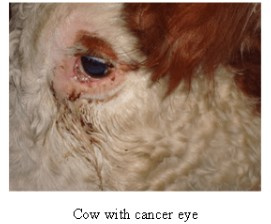Since 20% of gross receipts in a typical cow-calf operation come from the sale of cull animals, pay attention to price seasonality and body condition score before sending these animals to market. Prices are historically highest in spring and lowest in late fall/early winter when spring born calves are weaned and many culls are sent to market. Adding weight and body condition to culls is an opportunity to increase profitability but can be expensive. Work with a nutritionist to come up with realistic cost projections before feeding cull cattle for a long period of time.

When it comes to making decisions on who to cull, remember to consider functionality in your environment. Is she an “easy keeper”? Does she keep flesh and condition and raise a good calf, even when feed and forage is limited? On the opposite side, does she give too much milk or is her frame size so large that you can’t keep weight on her, even when pasture is plentiful? Is her pelvis so small and tight that calving is a problem and will be a problem in her offspring? Functionality leads to longevity and improved efficiency. By retaining more young cows in the herd, you can decrease the number of replacement heifers needed each year and cull cows that are only marginally profitable. Young cows also increase in value as they mature because the body weight of the cow and her calf’s weaning weight will continue to increase until approximately 5 years of age. Longevity will also be improved through crossbreeding because hybrid vigor adds essentially 1.3 years of productivity or one more calf per cow. If considering buying heifers, UK has a decision support tool available at http://www.uky.edu/Ag/AgEcon/pubs/BredHeifer.xlsx to help understand how to evaluate the price in your specific circumstances.

In summary, a herd of easy-keeping, efficient cows is possible through rigorous culling and careful selection of replacements. Match your genetics to your management and environment for maximum efficiency, longevity, and ultimately, maximum enjoyment of cattle production.
Cull Cow Language
- Breakers (75-80% lean)- Highest conditioned cull cows (BCS ≥ 7), excellent dressing percentages
- Boners or “boning utility” (80-85% lean)- Moderately conditioned (BCS 5-7), well-nourished commercial beef cows (usually highest price cull)
- Leans (85-90%)- Lower BCS (1-4), lower dressing percentages, susceptible to bruising during transport and expect more trim loss. Moving cows from lean to boner status can usually be done efficiently
Source: osu.edu